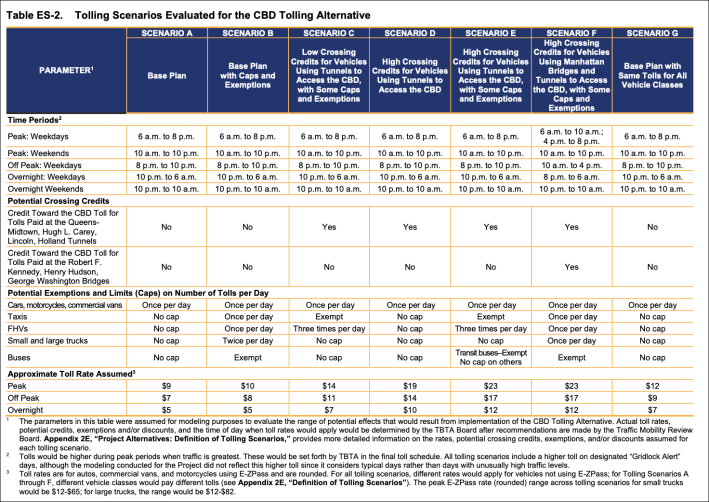Gridlock costs the city money, but in the future it could also cost money to the people who cause it.
When congestion pricing's $15 daytime toll begins in 2024, the MTA will have the ability to raise the traffic toll by 25 percent on the city's notorious Gridlock Alert days, the 20 or so days every year when Manhattan traffic is at more of a standstill than it is on a so-called "normal" day.
The MTA said it had that power, and modeled it in its environmental assessment (see footnote 2 below), but no one ever reported it, until Wednesday — the same day that the MTA Board formally added congestion pricing into the state's process for creating tolls.

Gridlock Alert Days include the United Nations General Assembly Week in September, and various days throughout the holiday season when the streets are flooded with pedestrian traffic and vehicle traffic.
The city Department of Transportation determines whether a day will be a "Gridlock Alert" day by looking at days that have higher overall street activity of all kinds (curb use, pedestrian traffic, vehicle traffic) or possible special events related to the holiday season, and takes into account factors like traffic volumes at the East River and Hudson River crossings into Manhattan and the previous year's traffic speeds in midtown between the pre-Thanksgiving and New Years Eve.
New York City has expanded the number of Gridlock Alert days in recent years, from 10 in 2017 to 19 in both 2022 and 2023. The city's usual reaction to Gridlock Alert days has been to politely ask people to walk, bike or take public transit into Manhattan, so an $18.75 toll will give the the request a bit more heft.
The ability to raise the toll when traffic gets worse is the MTA's first stab at variable tolling. The agency floated the idea of introducing the practice in 2020 when it was working on a toll hike that year, but the proposal went by the wayside.
The concept of the Gridlock Alert day was created by "Gridlock" Sam Schwartz when he was New York City Traffic Commissioner in the 1980s. Schwartz, not surprisingly, was in favor of the dynamic pricing concept.
"I think it's a smart idea, he said. "It's interesting and could make for a more dynamic system."
Schwartz also said that the 25 percent increase is a reasonable starting point for the proposal, and that over time the city and the MTA will learn how elastic the demand is for driving into the city on the gridlock days. Schwartz said that the MTA could consider also introducing a 25-percent lower toll on days with especially light traffic, even just using a method similar to the one he used to create the original Gridlock Alert days.
"The way they came into being is that I entered every single volume for every day on the 15 crossings into the city, and I printed them out in descending order from the heaviest traffic days of the year. So I'd look at a list like that.
"There's a net benefit to the MTA because the traffic volumes on Gridlock Alert days are far higher than the days you'd pay 25-percent less," he added.






